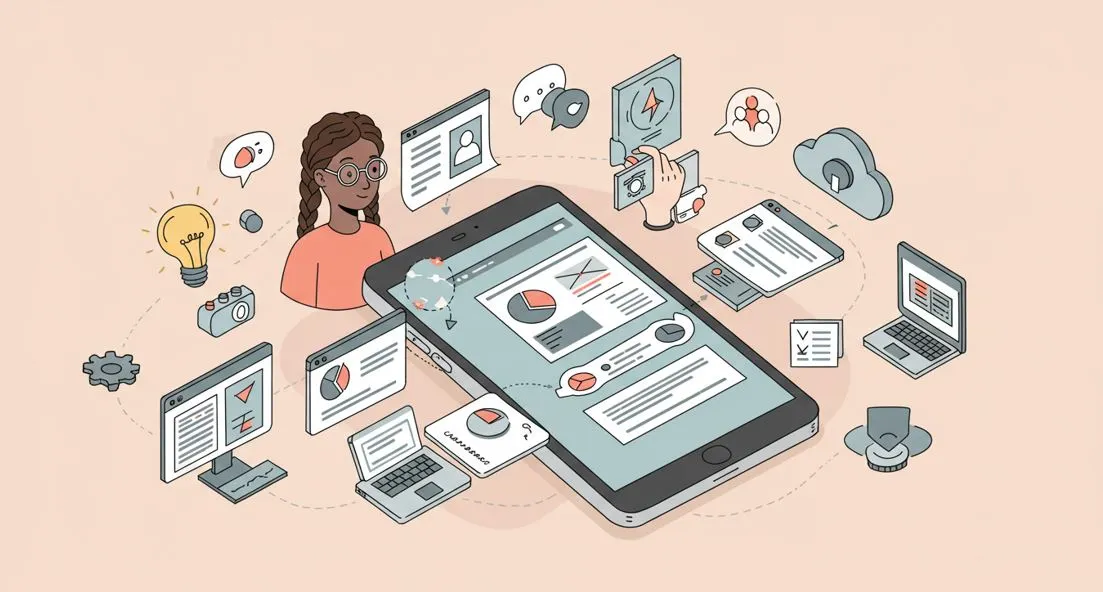
Selecting the right app development company is one of the most critical decisions for your project’s success. A well-built app can drive user engagement, boost revenue, and enhance your brand’s reputation, while a poorly developed app can lead to wasted resources, missed deadlines, and frustrated users. According to the 2023 Standish Group CHAOS Report, only 29% of software projects are delivered on time and within budget, while 52% face significant cost overruns or delays. Additionally, 25% of users abandon an app after just one use due to poor performance or usability issues (Localytics, 2023).
This guide will walk you through the essential steps to choose the best app development company, ensuring your project is delivered on time, within budget, and meets your business goals.
1. Define Your App’s Goals and Requirements
Before approaching any app development company, you need a clear understanding of your app’s purpose, target audience, and key features. A well-defined project brief helps you communicate your vision effectively and filter out companies that aren’t the right fit.
Key Questions to Ask:
- What is the app’s primary purpose? (e.g., e-commerce, social networking, fitness tracking)
- Who is your target audience? (e.g., age group, location, interests)
- What platforms will the app support? (iOS, Android, or both)
- What features are essential? (e.g., user authentication, payment gateways, AI/AR integration)
- What is your budget and timeline?
A Clutch study found that 70% of businesses with clearly defined app goals experienced smoother development processes and fewer revisions.
2. Evaluate the Company’s Expertise and Experience
Not all app development companies are created equal. Look for a partner with proven experience in your industry and the technical expertise to bring your vision to life.
What to Look For:
- Industry Experience: Has the company developed apps for your industry (e.g., healthcare, fintech, e-commerce)?
- Technical Skills: Do they specialize in the technologies you need, such as Swift (iOS), Kotlin (Android), React Native, or Flutter?
- Portfolio: Review their past projects to assess the quality of their work.
- Client Testimonials: Check reviews on platforms like Clutch, Google Reviews, or Upwork to gauge client satisfaction.
A 2023 GoodFirms survey revealed that companies with prior experience in a specific industry delivered projects 30% faster with fewer errors.
3. Understand the Development Process
A transparent and structured development process is crucial for delivering a high-quality app on time and within budget.
Key Aspects to Consider:
- Development Methodology: Do they follow Agile, Waterfall, or a hybrid approach? Agile is ideal for iterative development and flexibility.
- Project Management Tools: Companies using tools like JIRA, Trello, or Asana ensure better transparency and collaboration.
- Communication: Regular updates via Slack, Zoom, or Microsoft Teams help keep everyone aligned.
- Testing and QA: A robust quality assurance process ensures the app is bug-free and performs well across devices.
According to McKinsey, projects with structured communication plans are 45% more likely to be delivered on time.
4. Assess Costs and Budget
App development costs can vary significantly based on complexity, features, and the development team’s location. Understanding the cost breakdown helps you avoid unexpected expenses.
Typical Cost Ranges:
| App Type | Estimated Cost | Development Time |
|---|---|---|
| Simple App (MVP) | $10,000 – $50,000 | 3–6 months |
| Medium Complexity | $50,000 – $150,000 | 6–12 months |
| Complex App (AI, AR/VR) | $150,000+ | 12+ months |
Factors Influencing Costs:
- Team Location: Developers in the U.S. or Europe charge $100–$200/hour, while those in India or Eastern Europe charge $25–$70/hour.
- Technology Stack: Native apps (iOS/Android) are more expensive than hybrid apps.
- Third-Party Integrations: Payment gateways, APIs, and cloud services add to the cost.
- Ongoing Maintenance: Budget 15–20% of the development cost annually for updates and support.
A Statista report found that 63% of businesses underestimated their app budget, leading to delays or reduced features.
5. Prioritize Post-Launch Support
App development doesn’t end at launch. Regular updates, bug fixes, and technical support are essential for maintaining app performance and user satisfaction.
What to Look For:
- Maintenance Plans: Does the company offer ongoing support and updates?
- Scalability: Can they handle future feature additions and user growth?
- Response Time: How quickly do they address issues or bugs?
6. Look for a Client-Centric Approach
A company that prioritizes your needs and offers personalized solutions is more likely to deliver a successful app.
Key Indicators:
- Custom Solutions: Avoid firms that offer generic, one-size-fits-all apps.
- User-Centric Design: The app’s UI/UX should align with your target audience’s preferences.
- Transparency: The company should provide clear timelines, milestones, and pricing.
Final Checklist for Choosing an App Development Company
✅ Define your app’s goals, features, and target audience.
✅ Evaluate the company’s expertise, portfolio, and client reviews.
✅ Understand their development process and communication practices.
✅ Assess costs and ensure they fit your budget.
✅ Prioritize post-launch support and scalability.
✅ Choose a company with a client-first approach.
Why Choose SDTechnologist?
For a trusted and reliable app development partner, consider SDTechnologist.com. With expertise in iOS, Android, and cross-platform development, SDTechnologist delivers custom, scalable, and user-friendly apps tailored to your business needs. Their client-centric approach, transparent communication, and commitment to quality make them a top choice for businesses worldwide.
By following this guide, you can confidently select an app development company that aligns with your vision and ensures the success of your project.
